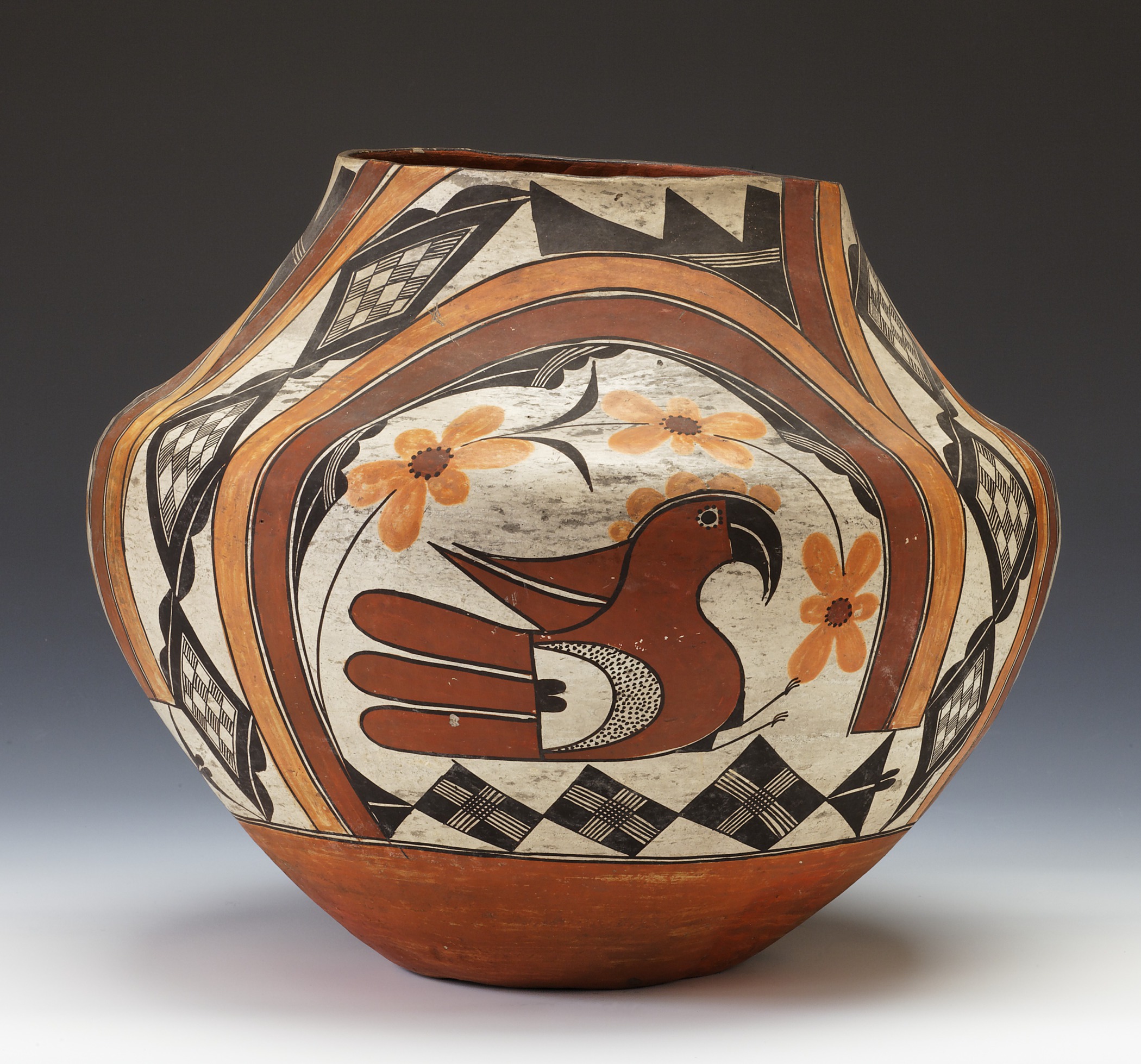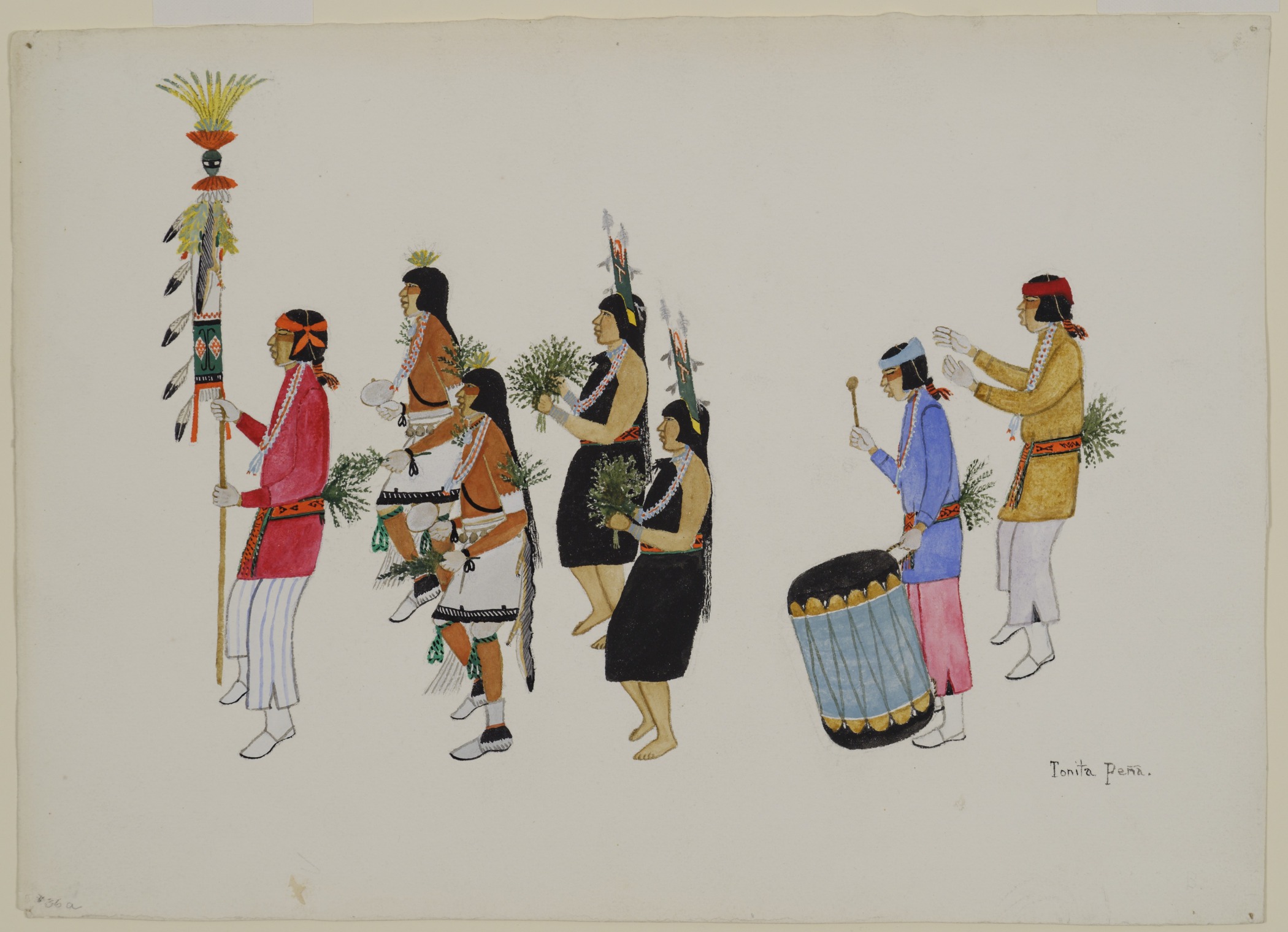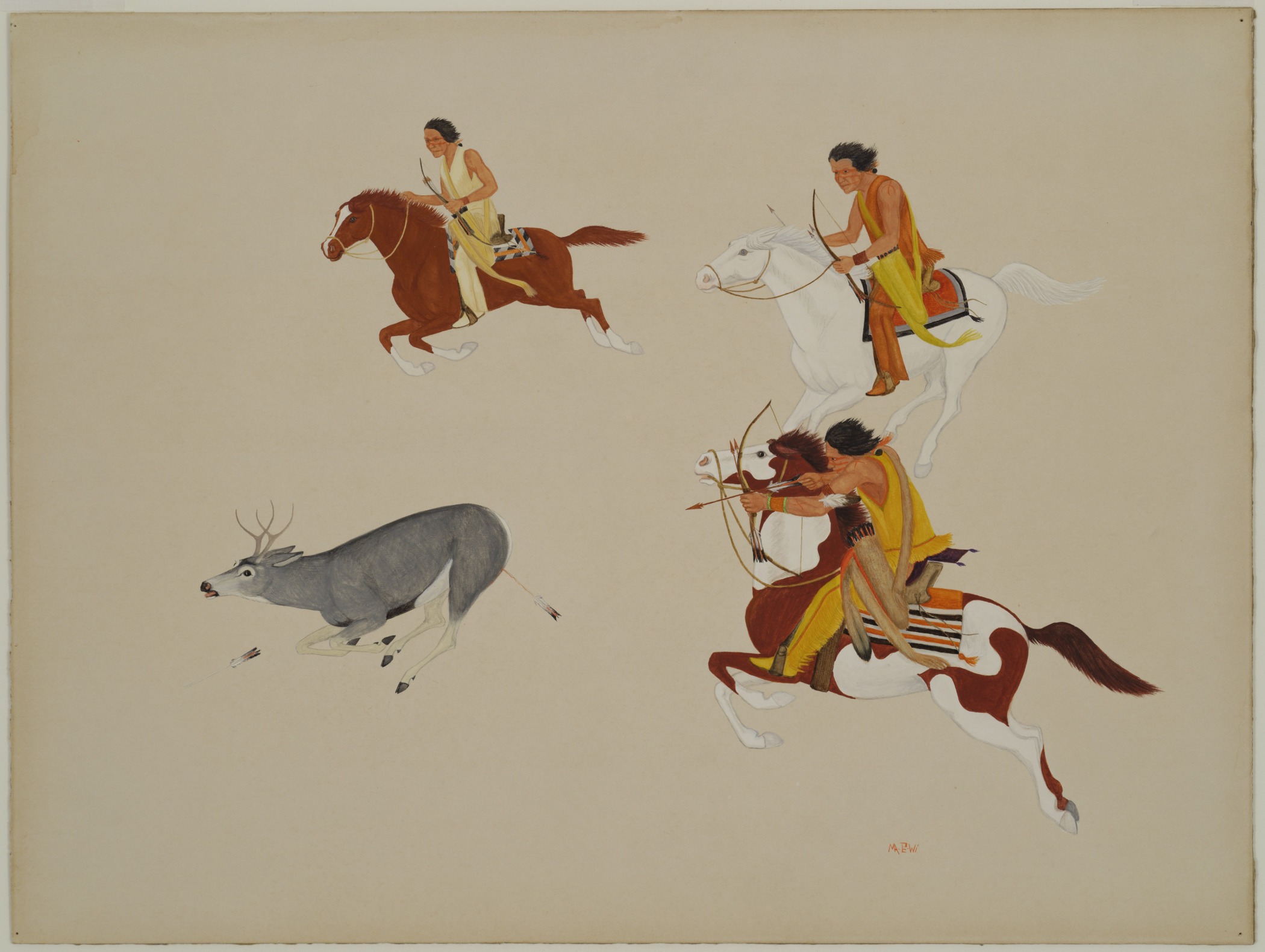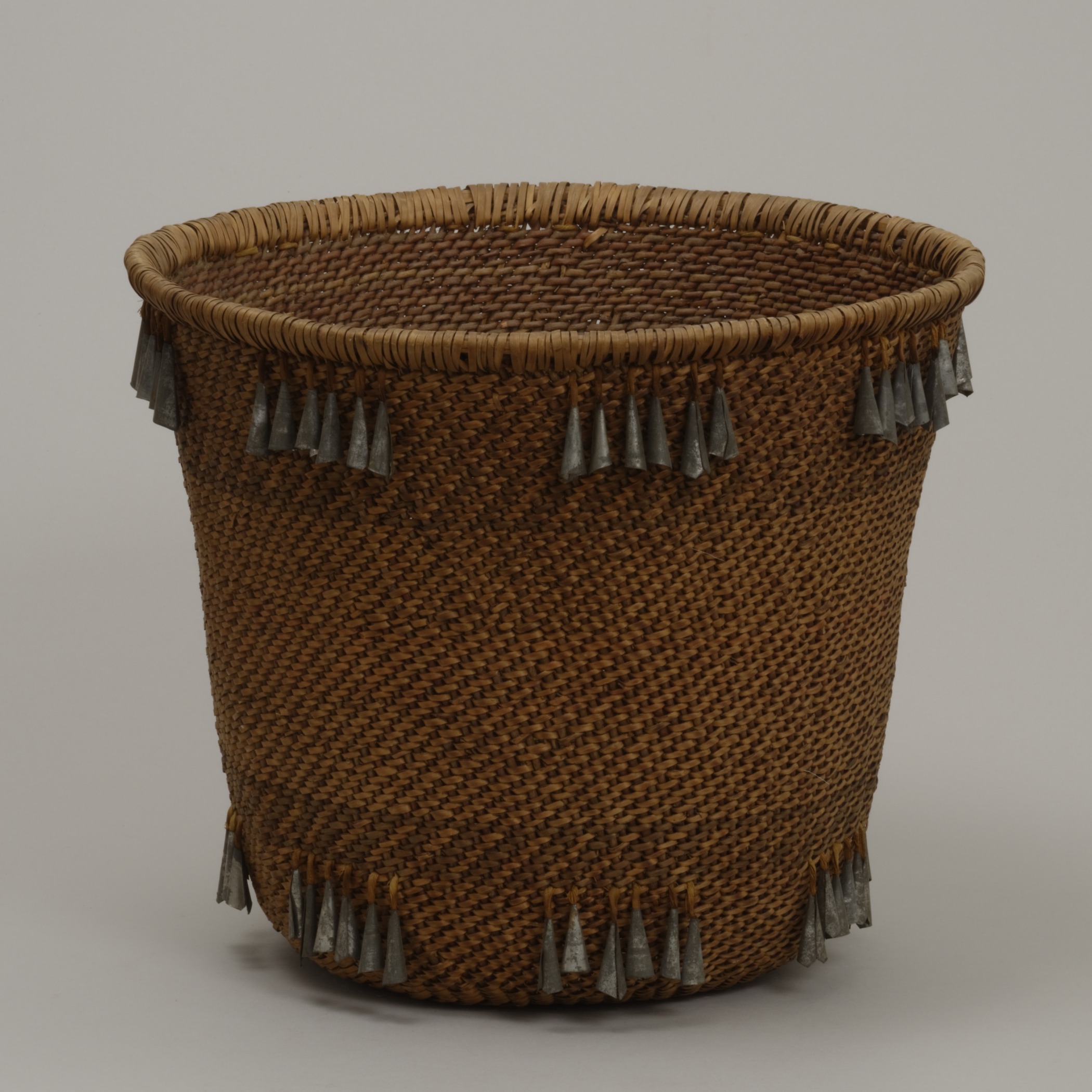Mescalero or Jicarilla Apache, New Mexico
Burden basket
- Late 19th century
- Sumac, mulberry, tin, and twining
- 14 9/16 × 12 5/8 in.
Hood Museum of Art, Dartmouth College: Bequest of Frank C. and Clara G. Churchill; 46.17.9528
visibilityLook & DiscussThe Apache were semi-nomadic, preferring hunting and gathering to the more sedentary lives of the Pueblo. They had no tradition of pottery making because pottery is heavy and fragile, and therefore ill suited for travel. They relied instead on baskets for cooking and storage.
Women might have used this basket for gathering berries, acorns, walnuts, pine nuts, and herbs.
explore the object
Apache women were expert basket weavers. Because they had to gather, cut, peel, then prepare their raw materials before weaving, a single basket could take up to six months to complete.
Apache basketweavers used a twining method to weave sumac or willow shoots into sturdy, long-lasting baskets.
Twining is a type of basketry construction created by weaving two shoots at the same time around the vertical spokes of a basket.
A basket with straight sides and a wide-open shape, like this one, was well adapted for collecting large quantities of food.
Apache basket weavers often finished their baskets by attaching chimes. The tinkling tassels were not only attractive but also practical. They helped to keep wild animals away while women were foraging for food.
related objects
Unlike other groups in the Southwest, the Apache had no pottery tradition. As a result, baskets were a vital part of food preparation and storage. The following Apache baskets demonstrate a variety of uses for Apache baskets.
Western Apache, basket, about 1900. Willow, cottonwood, and devil’s claw, 2 3/4 × 14 5/16 in. Hood Museum of Art, Dartmouth College: Museum Purchase; 51.27.12829.
Small woven basket-trays, like this one, which range from flat to nearly bowl shaped, were used for winnowing grain and preparing food. Winnowing involves rubbing and tossing corn or grain to separate the kernels or seeds from the husks. The clean kernels or seeds could then be parched by moving hot coals among them, all within the tray. This basket-tray, which was made for sale, is more decorative than trays used every day. It combines light-colored willow shoots with a plant, known as devil’s claw, to create the darker patterns. Devil’s claw is a particularly hard plant to handle. It has ends with sharp thorny projections and a tough outer skin. Weavers created strips of devil’s claw by running the plant through their teeth. Over time, this led to grooves in the teeth of the basket weaver.
Western Apache, Arizona, jar-shaped basket, early 20th century. Willow, martynia, and cottonwood, 15 15/16 × 13 3/8 in. Hood Museum of Art, Dartmouth College: Gift of Miss Annah P. Hazen; 158.24.14208.
Jicarilla Apache, coil-basket water bottle, collected 1887–1906. Plant fiber, horse hair, and leather, 8 11/16 × 8 1/16 in. Hood Museum of Art, Dartmouth College: Gift of Mrs. Ida Farr Miller; 44.18.8779.
The largest Apache baskets may have been used to store grain. They are taller than they are wide, with a rounded body and a wide mouth. This type of fine Apache basket is no longer made today. As a result, these jar-shaped baskets are among the most highly sought after by basket collectors.
One of the most remarkable types of Apache baskets is the water bottle. In the arid region of the Southwest, a reliable water bottle would have been critical to survival. Water baskets were woven very tightly and often covered with a layer of pine pitch.
Western Apache, basket, early 20th century. Willow, cottonwood, and devil’s claw, 3 3/4 × 14 in. Hood Museum of Art, Dartmouth College: Gift of Capt. Herbert L. Shuttleworth II, Class of 1935; 43.25.8621.
Bowl-shaped baskets, like this one, were traditionally used for the preparation and serving of food.
Activity: Simple Basket Weaving
Class time: 20–30 minutes
This activity is designed to help students learn about the basics of basket weaving and to better appreciate the construction of baskets featured on this site.
Learn More
In this video, art historian Joyce Szabo describes the difference between coiling and twining techniques used in Apache baskets.






